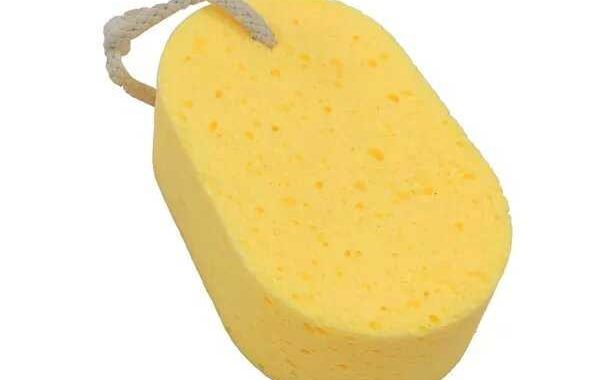1. High liquid absorption and retention capacity: Unlike some varieties of polyurethane sponges, cellulose sponges are more hydrophilic. Thanks to its unique porosity it provides a large surface area with an open cell structure. Therefore, the natural cellulose sponge is able to absorb 20 times its own dry weight of water and retain it in the pore structure. This feature can also be seen in other fluids such as motor oil, petroleum, gasoline, and dilute acids such as formic or nitric acid. Once water is added to the compressed sponge, it will expand back to its original thickness, and it will also retain all the properties you would expect in a regular moist (expanded) cellulose sponge.
2. Highly compressible elasticity: By applying heat and pressure, they have been compressed to approximately one tenth of their original (expanded) thickness, yet retain 100% of their properties. It expands to full size only when it comes in contact with water. Compression can only be achieved in the dry state, when wet, the material is elastic.
3. Tensile Strength: Cellulose sponge is one of the most resistant sponges on the market. Its tensile strength is regularly controlled during production. This is a huge advantage over cotton, non-woven and paper towels.
4. High cushioning performance: As a cushioning material, it can effectively absorb a large amount of impact energy to alleviate the injury of personnel in the collision, and it is not broken like expanded polyurethane and polystyrene.
5. Cleaning performance: The cleaning performance of sponges has been known all over the world for decades. The unique outer skin makes the sponge tight and firm.
6. Biocompatibility: Cellulose sponges have been shown to be hypoallergenic when dry, which is useful for medical purposes.
7. Light resistance: The fiber strength loss rate is low under long-term sunlight.
8. Chemical resistance: Chemical analysis shows that several dilute acids and bases have good stability.
9. Conductivity: Under humid conditions, the conductivity of natural cellulose sponge is remarkable, which is often used in electrotherapy.
10. Flammability and temperature resistance: Cellulose sponge material is flammable, although the rate of burning may vary depending on the impregnating liquid. Thermal analysis with cellulose showed that the sponge started to burn above 300°C.
11. Filtration properties: Cellulose sponges are able to filter gases and liquids from certain impurities, depending on the material.
12. Cooperate with sterilization: The sponge can be sterilized with gamma radiation, autoclave or ETO gas.
13. Washability: It can be cleaned and sterilized by the high temperature of the washing machine and the detergent to achieve secondary use.
14. Storage and transportation: In the compressed state, cellulose sponge has a perfect match for storage and transportation. They are lightweight, take up less space, and are great for low shipping and storage costs.
15. Combined with other high-performance materials, this foam is also widely used in adsorption, sensor, electrode material manufacturing, electromagnetic interference shielding, oil-water insulation, heat insulation, etc., or provides more innovation space for strengthening any of the following application scenarios .
Li De Sponge Co., Ltd. is located in China, specializing in the production and development of various polyurethane (including polyester and polyether) sponge raw materials and sponge products. The cellulose sponges we develop and produce are widely used in daily life, please feel free to consult our website.







